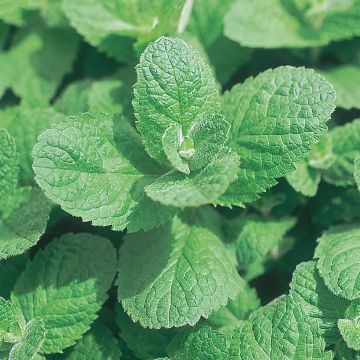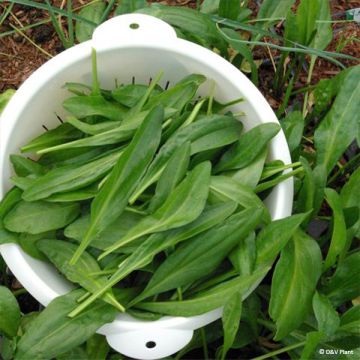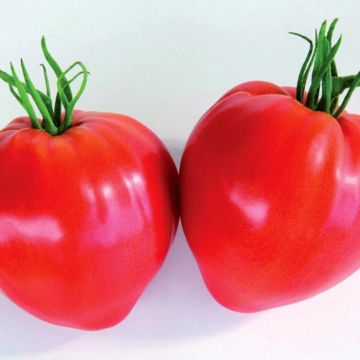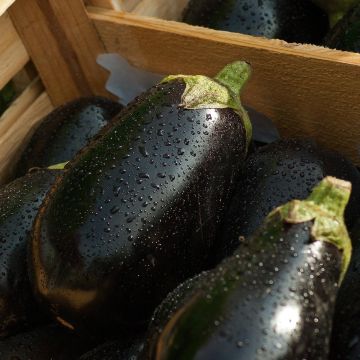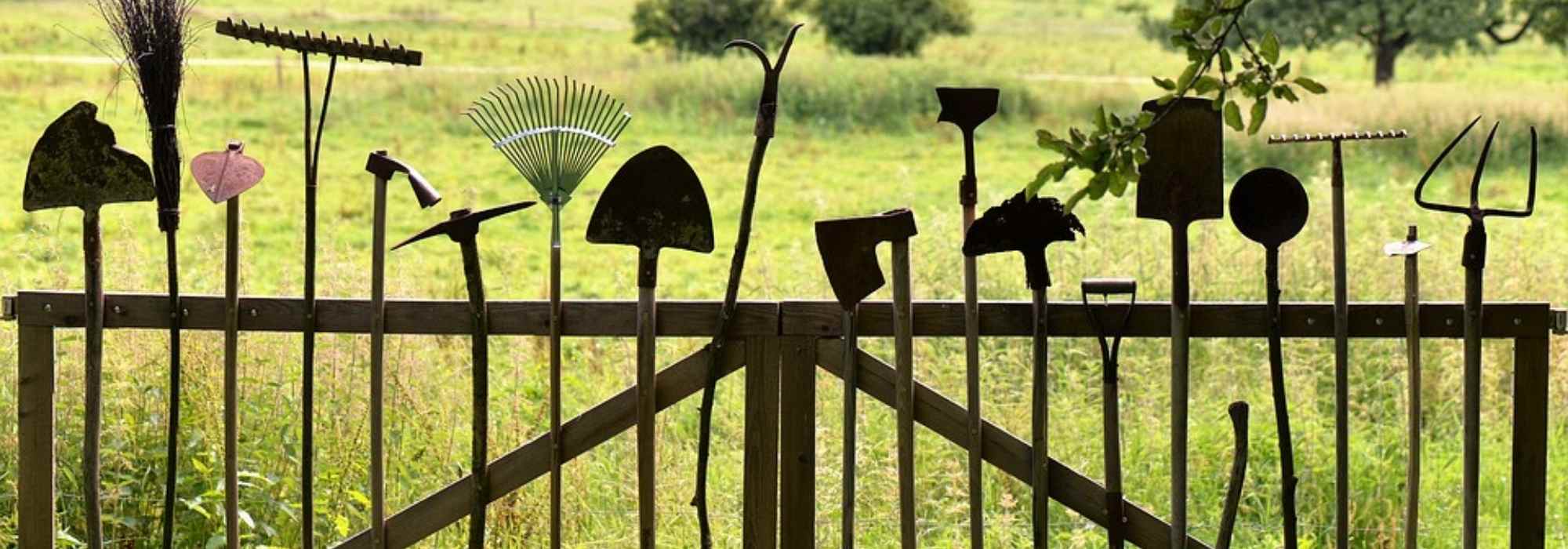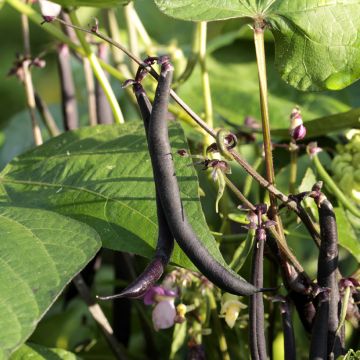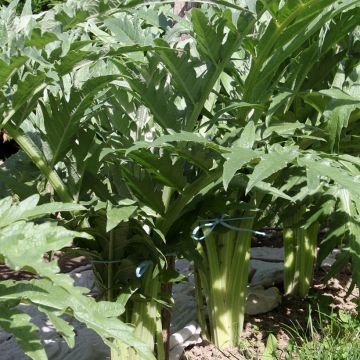

Green Chard with White Rib plants - Beta vulgaris
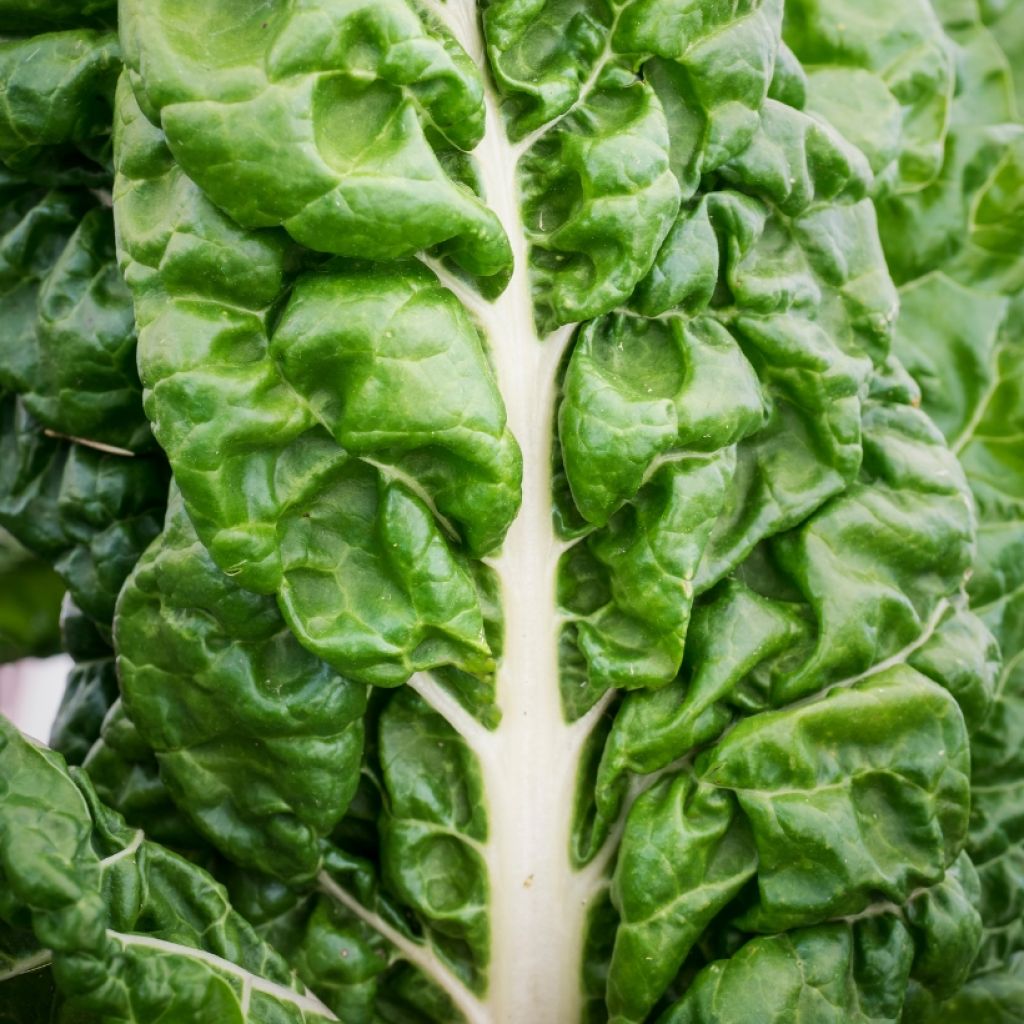

Green Chard with White Rib plants - Beta vulgaris


Green Chard with White Rib plants - Beta vulgaris


Green Chard with White Rib plants - Beta vulgaris
Green Chard with White Rib plants - Beta vulgaris
Beta vulgaris with White Rib 3 race B in seedlings
Swiss Chard
The young plants were way too tired. They recovered but didn't live up to my expectations.
michel, 01/10/2024
Special offer!
Receive a €20 voucher for any order over €90 (excluding delivery costs, credit notes, and plastic-free options)!
1- Add your favorite plants to your cart.
2- Once you have reached €90, confirm your order (you can even choose the delivery date!).
3- As soon as your order is shipped, you will receive an email containing your voucher code, valid for 3 months (90 days).
Your voucher is unique and can only be used once, for any order with a minimum value of €20, excluding delivery costs.
Can be combined with other current offers, non-divisible and non-refundable.
Home or relay delivery (depending on size and destination)
Schedule delivery date,
and select date in basket
This plant carries a 6 months recovery warranty
More information
We guarantee the quality of our plants for a full growing cycle, and will replace at our expense any plant that fails to recover under normal climatic and planting conditions.
Description
The Green Chard with White Stems is a cold-resistant variety with good resistance to running to seed. It produces dark green foliage and beautiful fleshy white stems. Called interchangeably Swiss Chard, Leaf Beet, Chard, or Silverbeet, Chard is grown for both its leaves and stems. The young plants of Green Chard with White Stems 3 Race B are planted from May to August for a harvest from July to November.
Chard gets its name from a popular soup, "porée," consumed in the Middle Ages and of which it was the main ingredient. It is also known by many other names: Swiss Chard, Leaf Beet, or Silverbeet. Swiss Chard belongs to the Chenopodiaceae family, like Beetroot. They are derived from the same plant. Swiss Chard produces a clump of wide leaves with fleshy petioles, which can be white or coloured depending on the variety.
In terms of cooking, Chard leaves are delicious in pies, soups, or cooked like spinach. The stems can be prepared gratin-style with béchamel sauce or steamed. Although low in calories and rich in dietary fibre, vitamins, and minerals, Chard should be consumed in moderation by people suffering from arthritis and rheumatism, as it contains oxalates.
Harvest: Leaves and stems are harvested as needed, selecting the largest ones, from summer until the first frost.
Storage: They can be stored for a few days in a cool place after harvesting.
Gardener's tip: To limit watering, we recommend mulching the soil with thin successive layers of grass clippings, if possible mixed with dead leaves. This protection, which keeps the soil moist, also reduces weed growth.
Green Chard with White Rib plants - Beta vulgaris in pictures




Harvest
Plant habit
Foliage
Other Vegetable plants A to Z
View all →Planting and care
Swiss chard thrives in cool, well-drained, moderately fertile soils (avoid fresh manure). Add well-rotted compost in autumn after loosening the soil. Choose a sunny location. Planting should be done from May to August.
When planting in the ground, space the young plants 40 cm (16in) apart in all directions. Soak the root ball in water for a few moments before planting. Dig a hole, place the root ball, and cover with fine soil. Water thoroughly. Regular watering is necessary during cultivation.
Regularly hoe and weed around the base of the plants.
If necessary, to protect the plants from slugs and snails, place ash and coffee grounds nearby, replenishing them after rain.
In certain climates (above -6°C (21.2°F)), Swiss chard can overwinter in the ground by generously mulching them. They can also be stored in a root cellar.
Cultivation
Care
Intended location
Planting & care advice
-
, onOrder confirmed
Reply from on Promesse de fleurs
Similar products
Haven't found what you were looking for?
Hardiness is the lowest winter temperature a plant can endure without suffering serious damage or even dying. However, hardiness is affected by location (a sheltered area, such as a patio), protection (winter cover) and soil type (hardiness is improved by well-drained soil).

Photo Sharing Terms & Conditions
In order to encourage gardeners to interact and share their experiences, Promesse de fleurs offers various media enabling content to be uploaded onto its Site - in particular via the ‘Photo sharing’ module.
The User agrees to refrain from:
- Posting any content that is illegal, prejudicial, insulting, racist, inciteful to hatred, revisionist, contrary to public decency, that infringes on privacy or on the privacy rights of third parties, in particular the publicity rights of persons and goods, intellectual property rights, or the right to privacy.
- Submitting content on behalf of a third party;
- Impersonate the identity of a third party and/or publish any personal information about a third party;
In general, the User undertakes to refrain from any unethical behaviour.
All Content (in particular text, comments, files, images, photos, videos, creative works, etc.), which may be subject to property or intellectual property rights, image or other private rights, shall remain the property of the User, subject to the limited rights granted by the terms of the licence granted by Promesse de fleurs as stated below. Users are at liberty to publish or not to publish such Content on the Site, notably via the ‘Photo Sharing’ facility, and accept that this Content shall be made public and freely accessible, notably on the Internet.
Users further acknowledge, undertake to have ,and guarantee that they hold all necessary rights and permissions to publish such material on the Site, in particular with regard to the legislation in force pertaining to any privacy, property, intellectual property, image, or contractual rights, or rights of any other nature. By publishing such Content on the Site, Users acknowledge accepting full liability as publishers of the Content within the meaning of the law, and grant Promesse de fleurs, free of charge, an inclusive, worldwide licence for the said Content for the entire duration of its publication, including all reproduction, representation, up/downloading, displaying, performing, transmission, and storage rights.
Users also grant permission for their name to be linked to the Content and accept that this link may not always be made available.
By engaging in posting material, Users consent to their Content becoming automatically accessible on the Internet, in particular on other sites and/or blogs and/or web pages of the Promesse de fleurs site, including in particular social pages and the Promesse de fleurs catalogue.
Users may secure the removal of entrusted content free of charge by issuing a simple request via our contact form.
The flowering period indicated on our website applies to countries and regions located in USDA zone 8 (France, the United Kingdom, Ireland, the Netherlands, etc.)
It will vary according to where you live:
- In zones 9 to 10 (Italy, Spain, Greece, etc.), flowering will occur about 2 to 4 weeks earlier.
- In zones 6 to 7 (Germany, Poland, Slovenia, and lower mountainous regions), flowering will be delayed by 2 to 3 weeks.
- In zone 5 (Central Europe, Scandinavia), blooming will be delayed by 3 to 5 weeks.
In temperate climates, pruning of spring-flowering shrubs (forsythia, spireas, etc.) should be done just after flowering.
Pruning of summer-flowering shrubs (Indian Lilac, Perovskia, etc.) can be done in winter or spring.
In cold regions as well as with frost-sensitive plants, avoid pruning too early when severe frosts may still occur.
The planting period indicated on our website applies to countries and regions located in USDA zone 8 (France, United Kingdom, Ireland, Netherlands).
It will vary according to where you live:
- In Mediterranean zones (Marseille, Madrid, Milan, etc.), autumn and winter are the best planting periods.
- In continental zones (Strasbourg, Munich, Vienna, etc.), delay planting by 2 to 3 weeks in spring and bring it forward by 2 to 4 weeks in autumn.
- In mountainous regions (the Alps, Pyrenees, Carpathians, etc.), it is best to plant in late spring (May-June) or late summer (August-September).
The harvesting period indicated on our website applies to countries and regions in USDA zone 8 (France, England, Ireland, the Netherlands).
In colder areas (Scandinavia, Poland, Austria...) fruit and vegetable harvests are likely to be delayed by 3-4 weeks.
In warmer areas (Italy, Spain, Greece, etc.), harvesting will probably take place earlier, depending on weather conditions.
The sowing periods indicated on our website apply to countries and regions within USDA Zone 8 (France, UK, Ireland, Netherlands).
In colder areas (Scandinavia, Poland, Austria...), delay any outdoor sowing by 3-4 weeks, or sow under glass.
In warmer climes (Italy, Spain, Greece, etc.), bring outdoor sowing forward by a few weeks.































